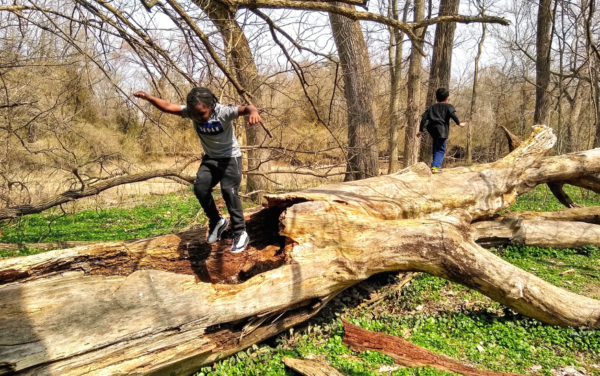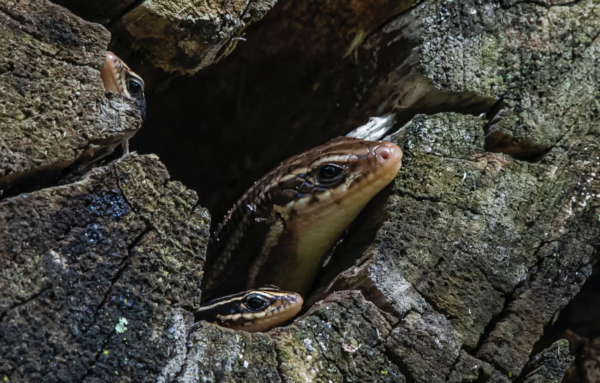To make things easy, let’s focus on the giants, the largest of our cousins. Whales come to mind. What happens to a whale when its life is at its end? How does it fall? As it turns out, when a whale dies, it sinks to the ocean floor; it falls. After a whale fall, ecosystems bloom. Beds of worms and bacteria surround and burrow throughout the whale’s body. Fish, lobsters and other scavengers consume what they can. Hunting those scavengers, octopuses and other predators mob the scene. On the flat ocean bottom, the whale’s skeleton provides new homes for many of our other cousins for decades.
Another of the giants is so obvious that many of us don’t even seem to notice them. Yet, if you stand almost anywhere outside where there is light and turn in a 360-degree circle, you will likely see some of our giant cousins, trees. Not only do we take them for granted, but we tend to see them as lifeless objects in the background of our perception. Yet, every tree breathes life into our atmosphere while offering multi-purpose residency and an abundance of essential foods for us and so many of our mutual cousins. At first glance, we see trees as a group. Only with greater scrutiny do we see them as distinct and unique individuals.

Unlike the whales who are comparatively rare and sink to the bottom of the vast ocean, evidence of the end of a tree’s life is easy to see in most of our forests where fallen trees litter the floor of the forest. Trees weaken as they age and become increasingly susceptible to environmental forces. These forces include temperature, wind, water and tiny cousins who can infect a tree with a deadly fungus or disease. Another powerful force is us, the tool builders who have built machinery and saws that can almost instantly end a giant tree’s life.
One of the giant sycamore trees living at LREC had deteriorated to the point of near-term collapse. A decision was made to initiate its fall and one day not long ago, one of those powerful saws was used to take it down. Sound, smoke, and dust were followed by a loud crack, a severe painful break. Down crashed the giant and the earth trembled as witnessed and felt by its many cousins who were nearby.

The fallen sycamore laid on the forest floor with some of its white branches extended into the air. It reminded me of its whale cousin’s skeleton on the ocean bottom. On its side, it now provided an accessible climbing platform for LREC students to play on in endless games. On a brutally hot and humid summer day, I sat on its welcoming trunk where I recovered after feeling lightheaded after hours of removing invasive plants nearby. New openings in the forest canopy provided sunshine and germinated seeds that had been dormant for years. Some of its branches were broken into pieces that were moved and buried to stabilize a disturbed section of the forest floor nearby. A new phase in the history of the sycamore had begun.
Every time I walk the LREC grounds, I try to pay close attention to what happens next to my giant cousin, the fallen sycamore tree. While we have life, there always seems to be a next and that also seems to be true about the time after life.
